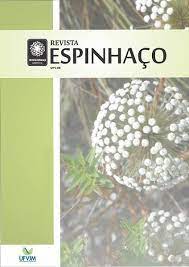O que está errado e o que está certo com o ensino de Geografia nos EUA?
DOI:
https://doi.org/10.5281/zenodo.3956640Palavras-chave:
educação geográfica, Estados Unidos, letramento geográfico, deficiências, tendências positivasResumo
Geographic Education in the United States generally receives less attention than many other subjects, and surveys have found that most students lack proficiency. The resulting level of geographic literacy in the general population carries significant implications for national and international competitiveness and decision-making. This paper reviews factors leading to deficiencies in US Geography Education, including lack of emphasis compared with subjects more prominently tested, teacher preparation and in-service training, curricula design, and high student mobility rates. We also review positive trends, including developing more rigorous sets of learning standards and geographic skills, and support from interested organizations and State educational agencies for encouraging student interest and participation in assessments and contests. We examine selective resources for teaching and learning geographic concepts and skills, many available online from federal and nongovernmental agencies. Finally, we consider the potential for learning geography through such informal science education venues as museums and mass media.
Referências
“U.S. Students Are Really Bad at Geography” https://www.usnews.com/news/articles/2015/10/16/us-students-are-terrible-at-geography
“K-12 Education: Most Eighth Grade Students Are Not Proficient in Geography”http://www.gao.gov/assets/680/673128.pdf
“Course requirements for Early Childhood and Childhood Education, State University of New York at New Paltz” http://www.newpaltz.edu/ugc/education/childhooded/req.html
“Next Generation Science Standards” https://www.nextgenscience.org/
“Charting the Course: A Road Map for 21st Century Geography Education” http://media.nationalgeographic.org/assets/file/Executive_Overview_Charting-the-Course.pdf.
“How Mobility Impacts Graduation Rates: What the Data Tell Us” https://www.ecs.org/how-mobility-impacts-school-graduation-rates-what-the-data-tells-us/
“Student Mobility: How It Affects Learning” http://www.edweek.org/ew/issues/student-mobility/index.html
“National Geography Standards” https://netforum.avectra.com/eweb/DynamicPage.aspx?Site=T est%20One&WebCode=GeographyStandards
“Geography Standard 7: The Physical Processes that Shape the Patterns of Earth’s Surface” https://www.nationalgeographic.org/standards/national-geography-standards/7/
“Geography Standard 8: The Characteristics and Spatial Distribution of Ecosystems and Biomes on Earth’s Surface” https://www.nationalgeographic.org/standards/national-geography-standards/8/
“National Geographic Standards Index” https://www.nationalgeographic.org/standards/national-geography-standards/
“Geographic Skills Index” https://www.nationalgeographic.org/geographic-skills/
“ACT (American College Testing)” http://www.act.org/
“The College Board” https://www.collegeboard.org/
“AP Human Geography” https://apstudent.collegeboard.org/apcourse/ap-human-geography
“AP Human Geography Overview” http://media.collegeboard.com/digitalServices/pdf/ap/ap-course-overviews/ap-human-geography-course-overview.pdf
“AP Human Geography Course Home Page” http://apcentral.collegeboard.com/apc/public/courses/teachers_corner/8154.html
“Total Registration: 2017 AP Score Distribution” https://www.totalregistration.net/AP-Exam-Registration-Service/2017-AP-Exam-Score-Distributions.php
“The National Geographic Society” https://www.nationalgeographic.org/
“National Geographic Society Education” https://www.nationalgeographic.org/education/
“National Geographic Society Education: Landscape
Investigation Guidelines” https://www.nationalgeographic.org/media/landscape-investigations-guidelines/
“National Geographic Society Education: Lessons” https://www.nationalgeographic.org/lesson/
“National Geographic Society Education: Activities” https://www.nationalgeographic.org/activity/
“National Geographic Bee” https://www.nationalgeographic.org/bee/
“National Geographic Society Study Corner” https://www.nationalgeographic.org/bee/study
“New York City K-8 Social Studies Scope and Sequence” http://schools.nyc.gov/NR/rdonlyres/82AC428B-068D-4DE1-95C2-8F7192B6D563/0/scopeandsequenceK8topbindingweb.pdf
“New York City 9-12 Social Studies Scope and Sequence” http://schools.nyc.gov/NR/rdonlyres/A739A67E-6228-4084-99C8-F890617D265B/0/scopeandsequence912_v6_web.pdf
“New York State Education Department: Learning Standards and Resource Guide with Core Curriculum for Social Studies” http://www.p12.nysed.gov/ciai/socst/ssrg.html
“New York State Common Core Social Studies Framework Grades 9-12) http://www.nygeographicalliance.org/sites/default/files/ss-framework-9-12.pdf
“Global History and Geography Regents Examinations” http://www.nysedregents.org/GlobalHistoryGeography/
“New Jersey Student Learning Standards for Social Studies” http://www.state.nj.us/education/cccs/2014/ss/standards.pdf
“Common Core State Standards Initiative: Social Studies” http://www.corestandards.org/ELA-Literacy/RH/introduction/
Reasons to Reject Common Core K-3 Standards—and 6 Rules to Guide Policy” https://www.washingtonpost.com/news/answer-sheet/wp/2014/05/02/6-reasons-to-reject-common-core-k-3-standards-and-6-axioms-to-guide-policy/
“Geographic Names Information System (GNIS)” https://geonames.usgs.gov/domestic/index.html
“United States Geological Survey Maps” https://www.usgs.gov/products/maps/map-topics/overview
“National Oceanic and Atmospheric Administration National Weather Service” https://www.weather.gov/
“National Oceanic and Atmospheric Administration Climate” https://www.climate.gov/
“NASA” https://www.nasa.gov/
“Center for International Earth System Information Network (CIESIN)” http://ciesin.columbia.edu/
(The Columbia University Earth Institute” http://www.earthinstitute.columbia.edu/
“CIESIN Programs And Projects” http://ciesin.columbia.edu/programs.html
“American Meteorological Society DataStreme Earth’s Climate System” http://www.ametsoc.org/amsedu/ecs/home.html
“American Meteorological Society DataStreme Ocean” http://www.ametsoc.org/amsedu/ds-ocean/home.html
“The American Museum of Natural History” www.amnh.org “Smithsonian Natural Air and Space Museum Geography from Space” https://airandspace.si.edu/explore-and-learn/geography-from-space/Children’s Museum of Blackburg Geography 101 Exhibit” (http://blacksburgchildrensmuseum.org/exhibits-and-programs/geography-101-museum-exhibit) Minerals Education Coalition https://mineralseducationcoalition.org/.
“International Movie Database: Where in the World Is Carmen Sandiego?” (http://www.imdb.com/title/tt0106172/)
“Houghton Mifflin Harcourt: Carmen Sandiego Returns” https://www.hmhco.com/at-home/featured-shops/the-learning-company/carmen-sandiego
Downloads
Publicado
Como Citar
Edição
Seção
Licença
Copyright (c) 2022 Revista Espinhaço

Este trabalho está licenciado sob uma licença Creative Commons Attribution-NonCommercial-NoDerivatives 4.0 International License.


